All Stories
-
 Health & Medicine
Health & MedicineWhere are the long COVID clinics?
For people with long COVID, finding a place to get appropriate medical care is a challenge.
-
 Animals
AnimalsDeer-vehicle collisions spike when daylight saving time ends
In the week after much of the United States turns the clock back, scientists found a 16 percent increase in crashes between vehicles and deer.
-
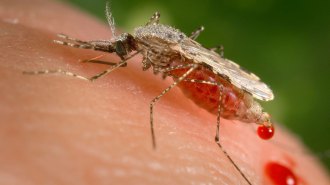 Health & Medicine
Health & MedicineA major malaria outbreak in Ethiopia came from an invasive Asian mosquito
Malaria may become a much bigger problem in Africa’s cities if the invasive mosquito continues to spread.
By Jake Buehler -
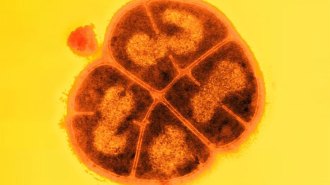 Microbes
MicrobesAncient bacteria could persist beneath Mars’ surface
Radiation-tolerant microbes might be able to survive beneath Mars’ surface for hundreds of millions of years, a new study suggests.
By Sid Perkins -
 Archaeology
ArchaeologyKing Tut’s tomb still has secrets to reveal 100 years after its discovery
More of Tut’s story is poised to come to light in the coming years. Here are four things to know on the 100th anniversary of his tomb’s discovery.
By Bruce Bower -
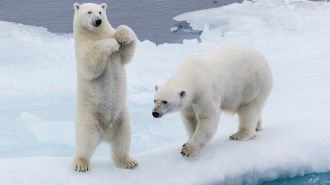 Animals
AnimalsHere’s how polar bears might get traction on snow
Microstructures on the Arctic animals’ paws might offer extra friction that keeps them from slipping on snow, a new study reports.
By Meghan Rosen -
 Animals
AnimalsBizarre aye-aye primates take nose picking to the extreme
A nose-picking aye-aye’s spindly middle finger probably reaches all the way to the back of the throat, CT scans suggest.
-
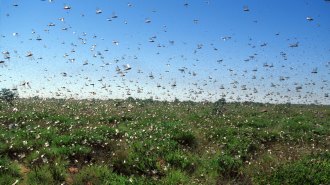 Animals
AnimalsInsect swarms might generate as much electric charge as storm clouds
Honeybees flying over a sensor measuring atmospheric voltage sparked a look into how insect-induced static electricity might affect the atmosphere.
-
 Climate
ClimateWind turbines could help capture carbon dioxide while providing power
Turbulent wakes from wind turbines can concentrate CO2 from cities and factories, making it easier to remove the greenhouse gas from the atmosphere.
-

Long COVID brings another huge challenge to science
Editor in chief Nancy Shute discusses the challenges of long COVID and what it takes to report on it.
By Nancy Shute -

-
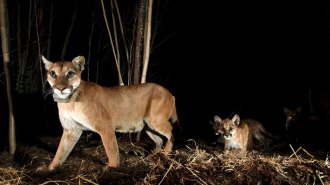 Animals
AnimalsMountain lions pushed out by wildfires take more risks
A study tracking mountain lions showed that after an intense burn, the big cats crossed roads more often, raising the risk of becoming roadkill.